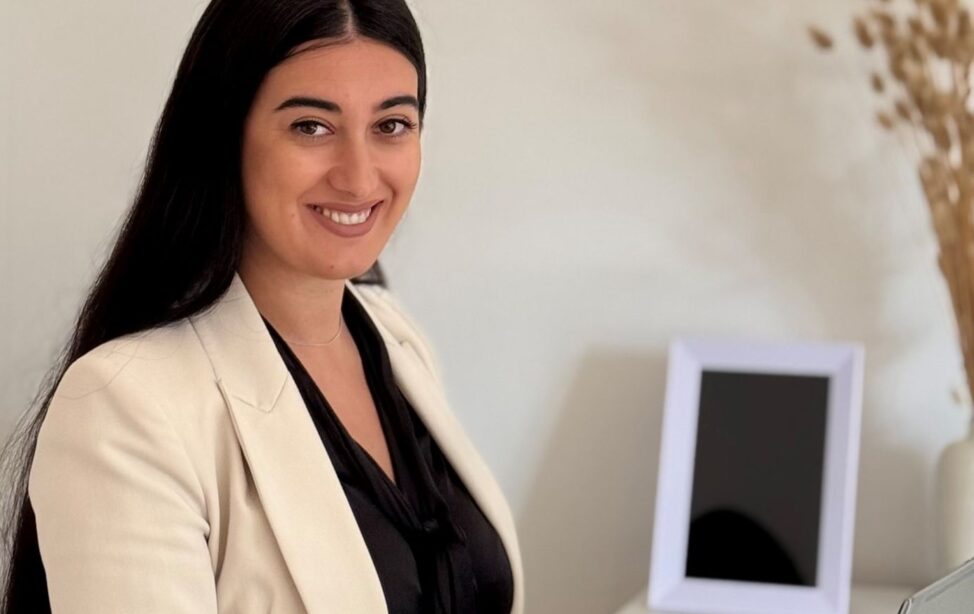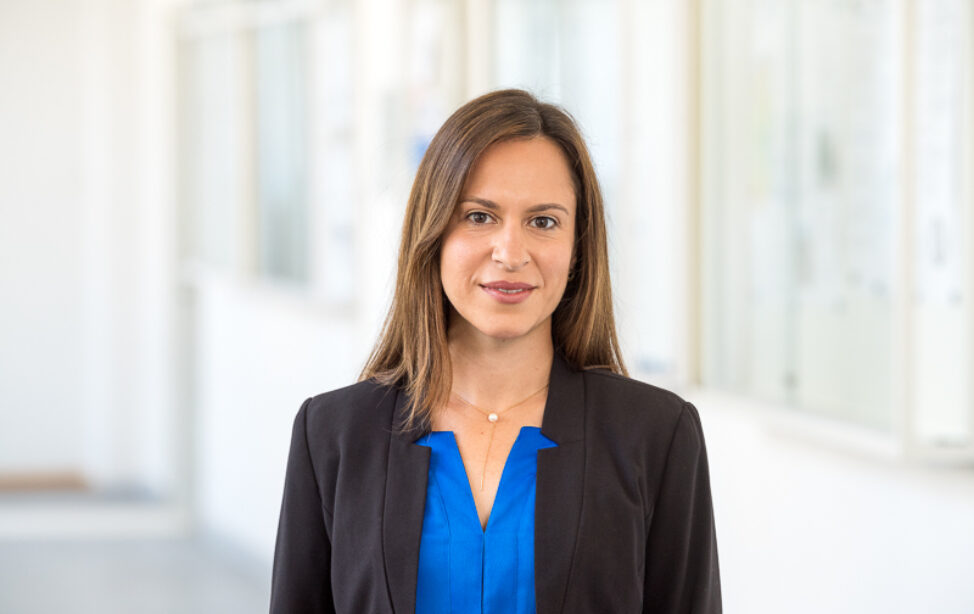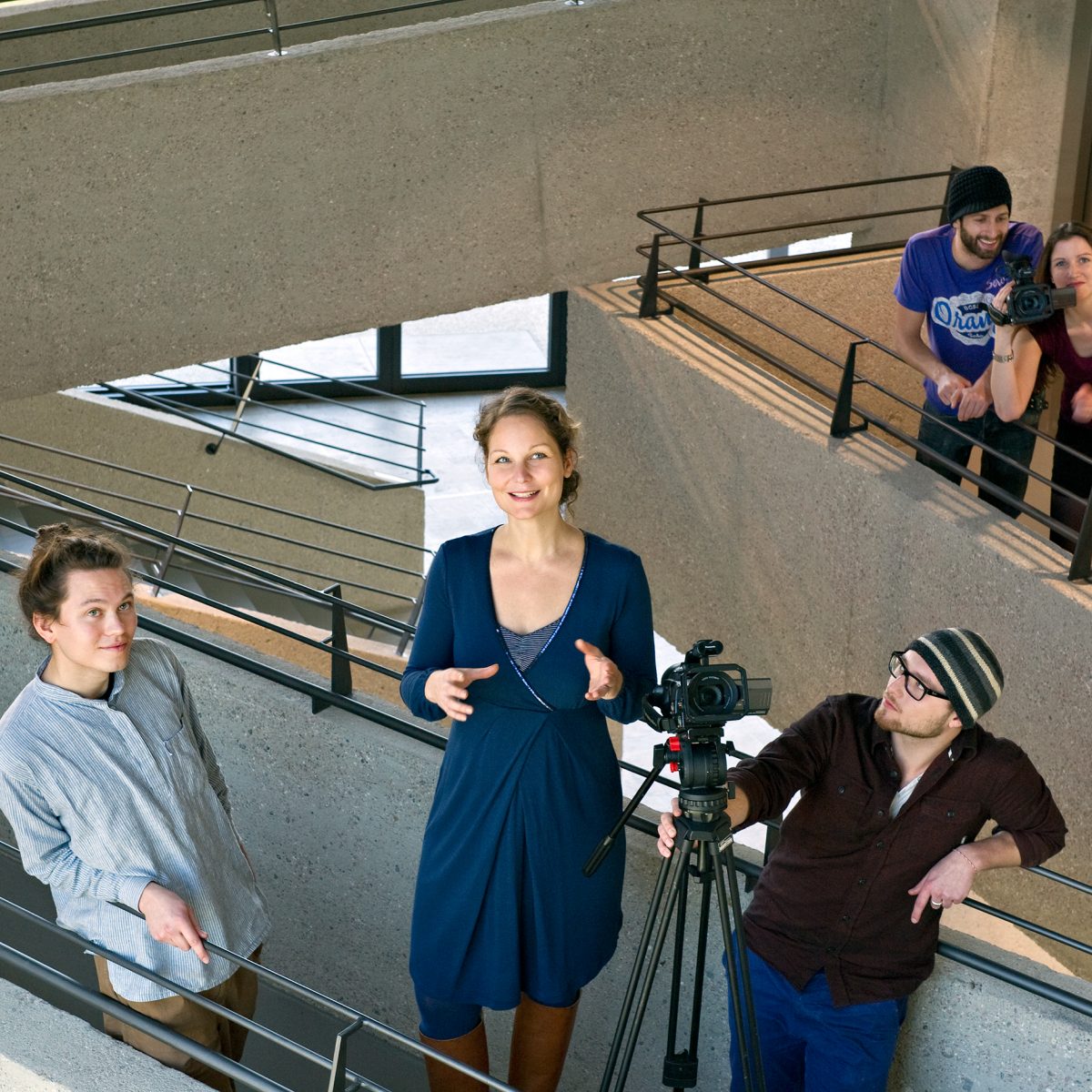
Prof. Waleska Defne Leifeld with TUM students at HFF. Leifeld received the Ernst Otto Fischer Teaching Award in 2011 for her model of cooperative teaching (Picture: Astrid Eckert).
Leifeld is a set desinger: based on scripts, she designs locations and buildings for film sets. For the war drama “All Quiet on the Western Front,” she researched and designed trenches, train carriages and military camps; for almost every set she made a drawing. To great success. Earlier this year, the film won an Oscar in the category “Best Production Design.” “The nomination already made me really happy,” she says today. “That we actually won in the end, was unbelievable.”
NOT A CONVENTIONAL ARCHITECT
Already during her studies of Architecture at TUM, Waleska Defne Leifeld knew that she would not become a conventional architect. Her internships in architecture firms were interesting, but she knew this was not her future. So on the side, she continued to work at the theater: creating stage designs. But still, it was always clear to her that studying was exactly what she needed at the time. “I could tell that this degree program was exactly where I needed to be. What I learned there has shaped me to this day,” she says.
The long nights with the other students, when the designs they had worked out together finally hung on the walls. This sense of camaraderie, which is so important on film sets, as well. The broad and diverse knowledge she gained there. At Professor Rainer Wittenborn’s chair at TUM she was introduced to free artistic work, TUM Professor Dr. Hannelore Deubzer showed her the power of lighting, and Professor Ueli Zbinden taught her to understand, see and read space. The understanding of space has stayed with her to this day.
I Could Tell That This Degree Program Was Exactly Where I Needed to Be.
Most people who step into an unfamiliar room simply walk through it. Maybe they take a quick look around or sit down for a while, but eventually they move on and forget about it. Not so Waleska Defne Leifeld. “I observe very closely,” she says. And sometimes there are moments when it gets exciting, when the light touches the surfaces in a very specific way. Moments when the rays collide with moisture, for example, and ripple deeper into the space. “The weather, the light, the time of day, all of that affects the experience of the space,” Leifeld says. In her designs, she wants to recreate all of that.
After her postgraduate studies at the Academy of Television and Film Munich (HFF), set designer Uli Hanisch brought her onto the set of the screen adaptation of “Perfume” in 2005. Initially, Leifeld was just an intern, but as the film progressed, she was allowed to help develop sets, build props, and make technical drawings. It was then that Leifeld thought to herself, yes, this is exactly how it should feel, this is where I want to be, this feels great, this is what I want to pass on. “I always wanted to bring back what I had experienced in the actual work environment, which is why teaching has always been a second string to my professional bow,” Leifeld says.
THE RIGHT PATH
She first brought her experience to TUM as a Research Assistant at the Chair of Sustainable Urbanism under Professor Mark Michaeli, then as an Assistant Lecturer for Scenography at the Chair of Architectural Design and Conception under Professor Uta Graff. Since 2021, she has been a professor at OTH Regensburg. Sometimes, Leifeld says, she becomes totally engrossed in the work with her students and time just flies by. That is when she knows that this, too, was the right path.
Before the Academy Award in 2023, she received the Ernst Otto Fischer Teaching Award. The prize honors innovative teaching projects implemented at TUM. Leifeld was awarded the prize in 2011 for her model of cooperation with the University of Television and Film. To this day, Uta Graff’s chair offers joint seminars. Students of Cinematography and Architecture work together, develop large-scale models and sets, lighting and filming subsequently happens at HFF. “Using the space as the protagonist, stories are then told without any human presence at all,” Leifeld explains.
WHAT’S NEXT?
Leifeld continues to be committed to TUM. A few years ago, she shared her experience as part of a panel. It was on the next steps after studying Architecture. Which options are there? Is this the right place for me? “Take as much on board as you can during your studies,” Leifeld told the students at the time, “be a little brave, trust yourselves, trust that you’ll find your path, it doesn’t always have to be the conventional one, I didn’t know mine beforehand either, but the path, it will reveal itself.”
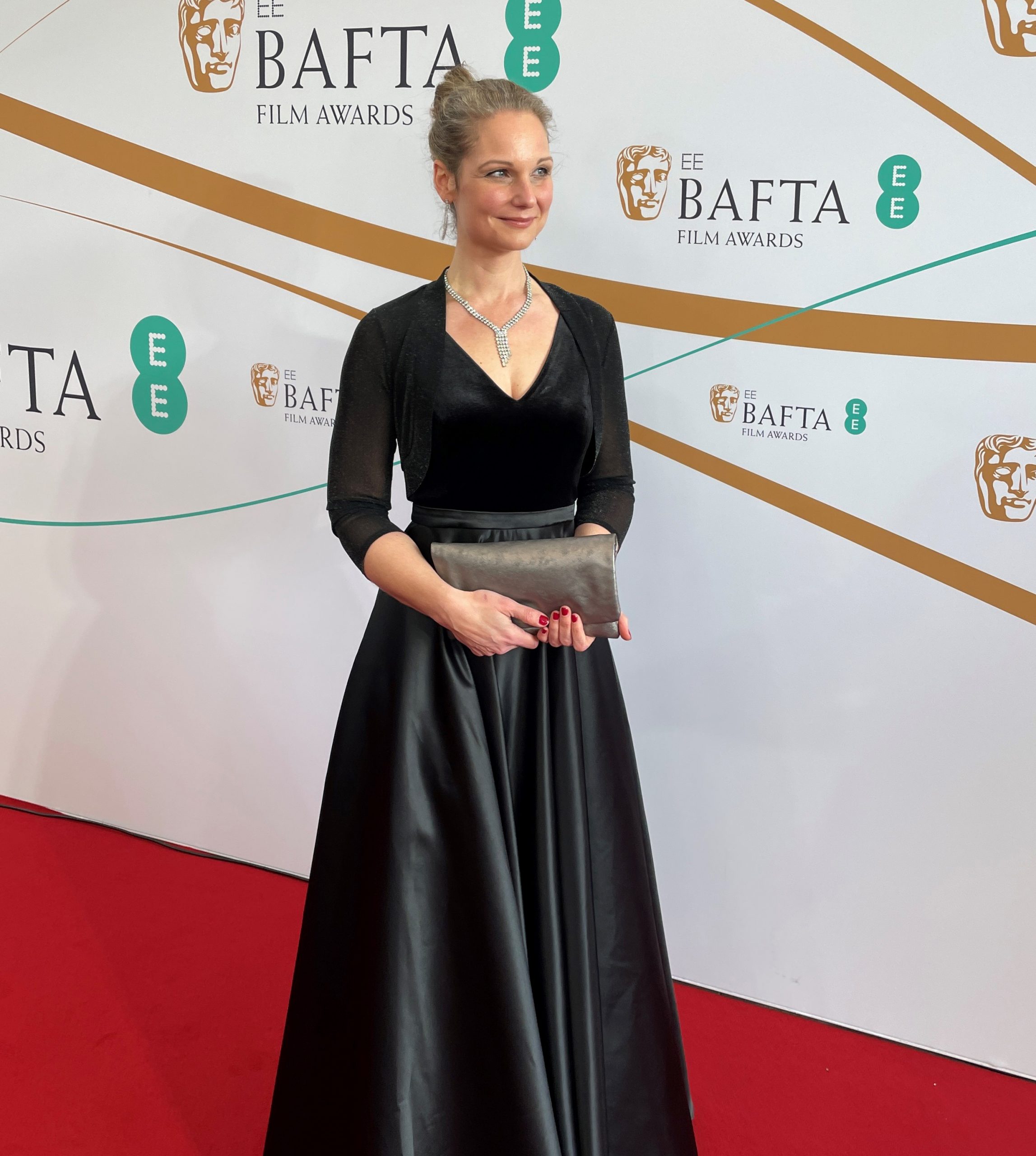
At the BAFTA Awards, "All Quiet on the Western Front" was awarded Best Film. As part of the Art Department, Prof. Waleska Defne Leifeld attended the event. A short time later, the Academy Award for "Best Production Design" followed (Picture: Stefanie Butscheidt).
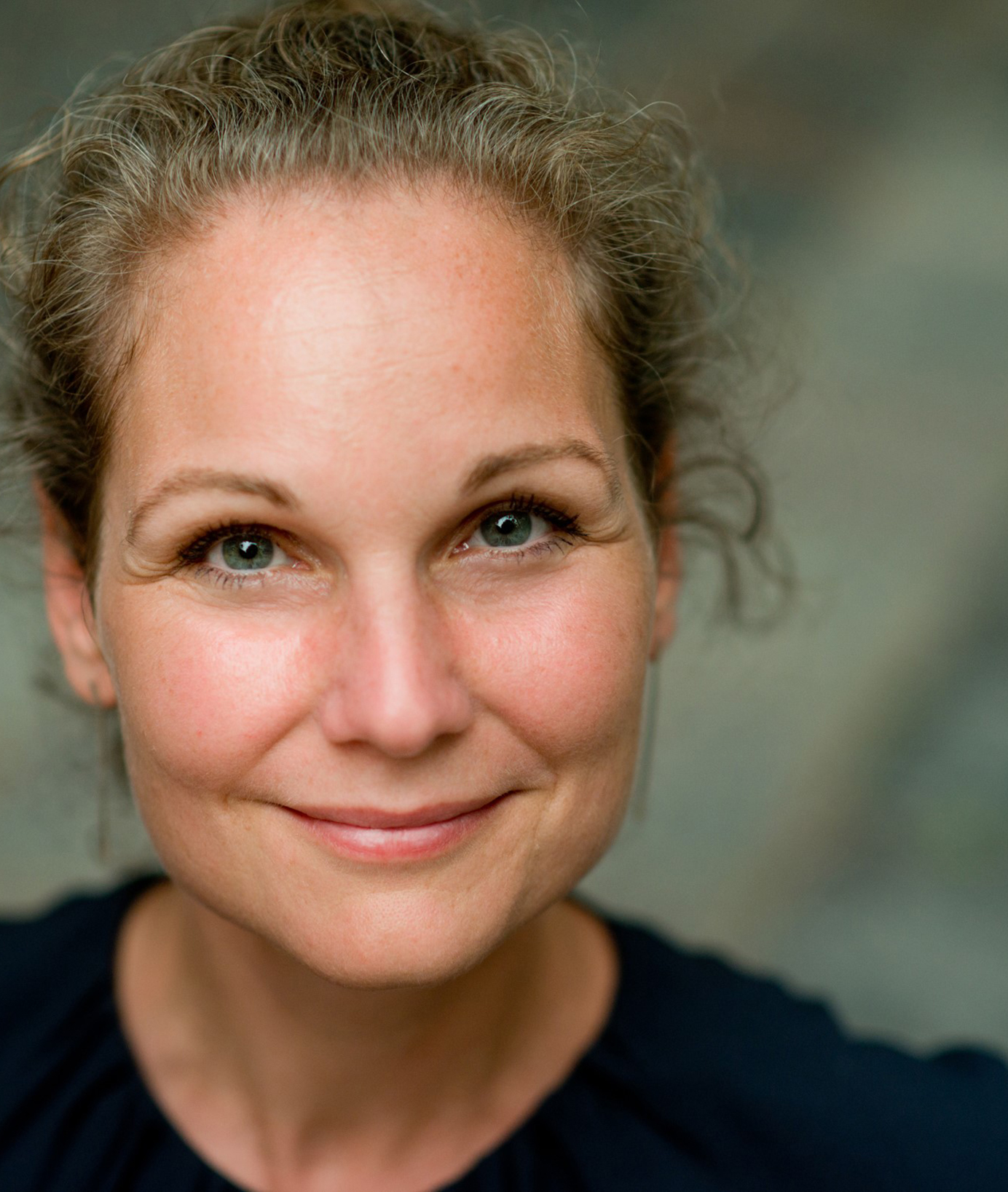
Prof. Waleska Defne Leifeld (Picture: Stephanie Defregger).
Diploma Architecture 2002
After studying Architecture at TUM and spending time abroad at the École Polytechnique Fédérale de Lausanne, Waleska Defne Leifeld completed a postgraduate course in Production Design for Film and Television at the University of Television and Film Munich (HFF). In addition to films such as “Perfume – The Story of a Murderer” and “Krabat,” she also worked as a set designer on the German film “All Quiet on the Western Front.” The film has won several Academy Awards in 2023, including Best Production Design.
Since May 2021, Leifeld has been a professor at OTH Regensburg. Here she teaches “Analog and Digital Design and Representation” at the Faculty of Architecture. Numerous teaching assignments at HFF and the Faculty of Architecture at TUM preceded her professorship. In 2011, she was awarded the Ernst Otto Fischer Teaching Prize by TUM to honor her innovative teaching concept, a cooperation with HFF. Leifeld has three children and lives in Munich.

